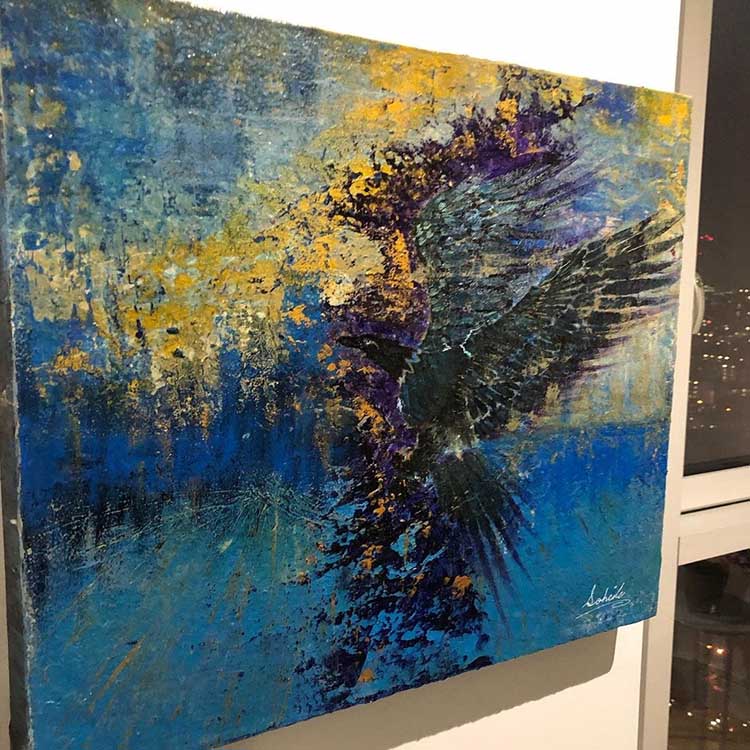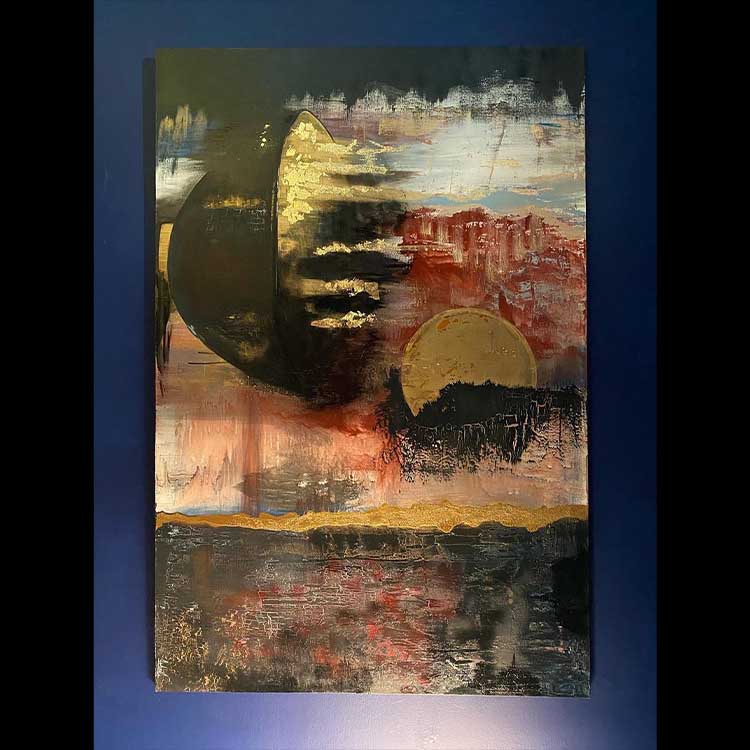In this article, we want to talk aboutCreating Abstract Flowers Painting . Join us
Flowers represent so many different things to different people. They can represent beauty, serenity, new beginnings, new seasons and renewal, to name a few which is why they make an ideal subject for artists who want to work more abstractly. Whether hoping to capture vibrant colors, movement, textures or overall atmosphere, abstract flowers help artists let loose and unleash their creativity in the most invigorating ways.
Painting Abstract Flowers
I find freedom in creating abstract art because it leaves so much room for intuition, serendipity and playfulness
Materials:
- Protected work surface
- Art journal with heavyweight paper, or other substrate of choice (watercolor paper, canvas, etc.)
- Gesso, white
- Paintbrushes, including a flat brush for collage and a mid-sized round brush for painting
- Pencil
- Ballpoint pen, black, permanent
- Water-soluble crayons in your choice of colors
- Matte gel medium, soft or regular
- Water
- Pictures of flowers from magazines or gardening catalogs, various sizes
- Palette
- Assorted acrylic inks or fluid acrylic paints in your choice of colors
- Small brayer or plastic card
Optional:
- Collage papers: book pages, sewing pattern papers, etc.
- Stamps and ink pads
- Heat gun
- Fine-tip white pen

1. Start with Interest
Working on a protected surface, create an interesting, textured background on the substrate in light, neutral tones. This underlayer adds depth to the painting.
2. Apply Gesso
Paint an uneven coat of white gesso onto the background. Let it dry thoroughly
3. Journal Your Thoughts
Journal over the background with a pencil and/or a permanent ballpoint pen. Both are perfect for light, flowing handwriting, and they are water resistant.
4. Scribble Away
Scribble on the page, using water-soluble crayons in a few shades of green. Start with a focal scribble that will be the starting point for a big cluster of flowers. Then add some smaller scribbles here and there, switching between the different greens as you go and leaving plenty of white space.
5. Mix and Mingle Media
Mix some gel medium with water to the consistency of fluid paint. Using your fingers, randomly apply the gel medium mixture to the scribbles to move and also seal the crayons.
6. Add More Colors and Sizes
Create some compact scribbles for small flowers using more water-soluble crayons in at least two other colors. I used pink and red. Don’t be tempted to sketch the flowers, just scribble away and watch them bloom.
7. Move and Seal
Add some watered-down gel medium to move and seal the crayons, as before. Don’t overwork it.
8. Follow Your Heart(s)
Select and tear out a few magazine images of flowers, keeping only the heart of the flowers with all their beautiful petals. Make sure you have some variety in size and color.
9. Trust the Process
Choose one large flower that will serve as your focal point, and place it somewhere in the main cluster of scribbles. Experiment with placement until it feels right.
10. Finger Painting
Add a few drops of acrylic paint to a palette in a variety of colors, inspired by the collaged images and the crayons you used earlier.
11. Paint Splatters
Load the paintbrush with the same watered-down paints, then, holding the brush over the page, tap on the handle to create paint splatters all over the page. Repeat with different tones of your chosen colors.
12. And Repeat
Add white acrylic paint to the palette and repeat steps 10 and 11. Some white will get mixed in with the other paint colors, on the palette and on the surface, and create a variety of lighter shades. Add some white splatters to the page, too. Allow to dry.
13. Create Contrast
Working in the same manner, using a paintbrush and your fingers, add some green paint mixed with water. Use the darker green tones to create contrast in some areas, especially around some of the flowers.
14. Drip in More Interest
Add water to the wet green paint on the page here and there. Tilt the substrate to let the water run, creating beautiful drips. Then lay it flat and allow to dry. Remove any excess water with a dry cloth, especially if some has run over the flowers.
15. Refine Your Focal Point
Add white paint in places that you feel need more light and to draw the eye to the focal point. Then let everything dry. At this stage you might feel like your page is messy and busy.
16. Soften Areas
Mix white acrylic paint with water to a very fluid, runny consistency. Roll a brayer into the paint mixture, then roll the brayer loosely over the areas of your painting that you want to soften.
17. (Optional) Final Thoughts
I like to start and end my process with journaling. Using a fine-tip white pen, journal very loosely and intuitively over the page, especially in the quieter areas.




